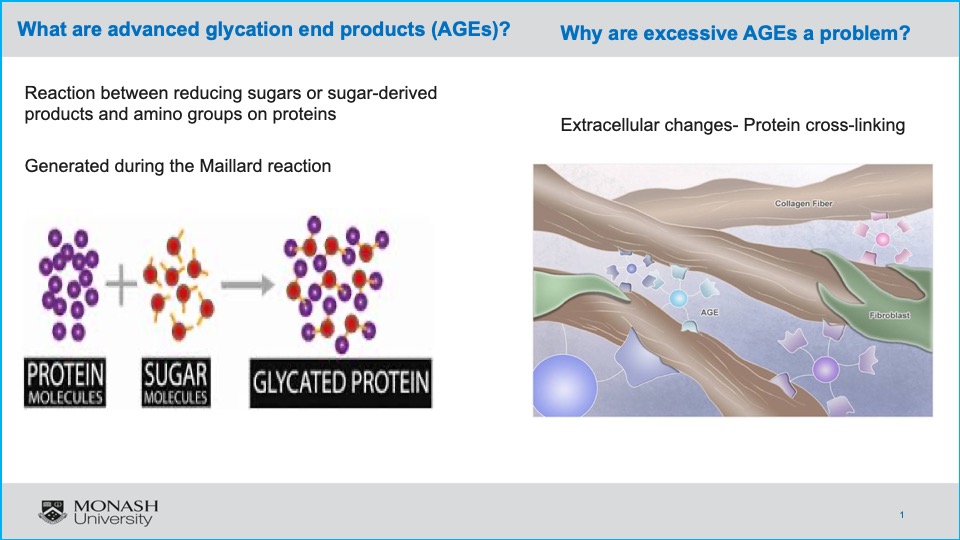Advanced Glycation End Products (AGEs). Presented by Dr Nicole Kellow, PhD, APD, CDE
Described as “dark, sticky and treacherous” the accumulation of AGEs in our body impacts our health. In Nicole’s presentation she explains what AGEs are, how they are formed, AGE levels of common foods and dietary advice for reducing AGE intake.
Advanced glycation end products are formed when carbonyl groups of reducing sugars and the amino groups of proteins react. There are a series of condensation and reduction reactions which are initially reversible before the final, irreversible AGEs are produced. Increased blood glucose, lipid levels, high levels of inflammation or oxidative stress encourages the process of AGE formation. When formed, AGEs cause crosslinking between cells, resulting in the damaging increased rigidity.
In diabetes, pathological changes occur at the cellular level which cannot always be explained by the level of glycemia. It is thought that AGEs may significantly contribute not only to complications of diabetes including vascular complications, CVD and chronic kidney disease but also other inflammatory conditions such as NAFLD, PCOS and dementia.
The average Western diet contains very high concentrations of AGEs. It is not difficult to significantly reduce dietary AGE consumption with simple measures eg. Increasing the water content of the food, cooking for a shorter time, reducing the pH by adding lemon juice or vinegar, avoiding highly sweetened beverages and reducing the protein content.


Dr Nicole Kellow is an Accredited Practising Dietitian (APD) and Credentialled Diabetes Educator (CDE) with 20 years of clinical experience. Her PhD project investigated dietary and lifestyle interventions to reduce Advanced Glycation End-products (AGEs). Nicole is currently a Senior Research Fellow and an NHMRC Early Career Research Fellow in the Monash University Department of Nutrition, Dietetics & Food, where she is investigating the impact of dietary AGEs on infertility.
To register for the presentation and associated documents including the assessment quiz click here